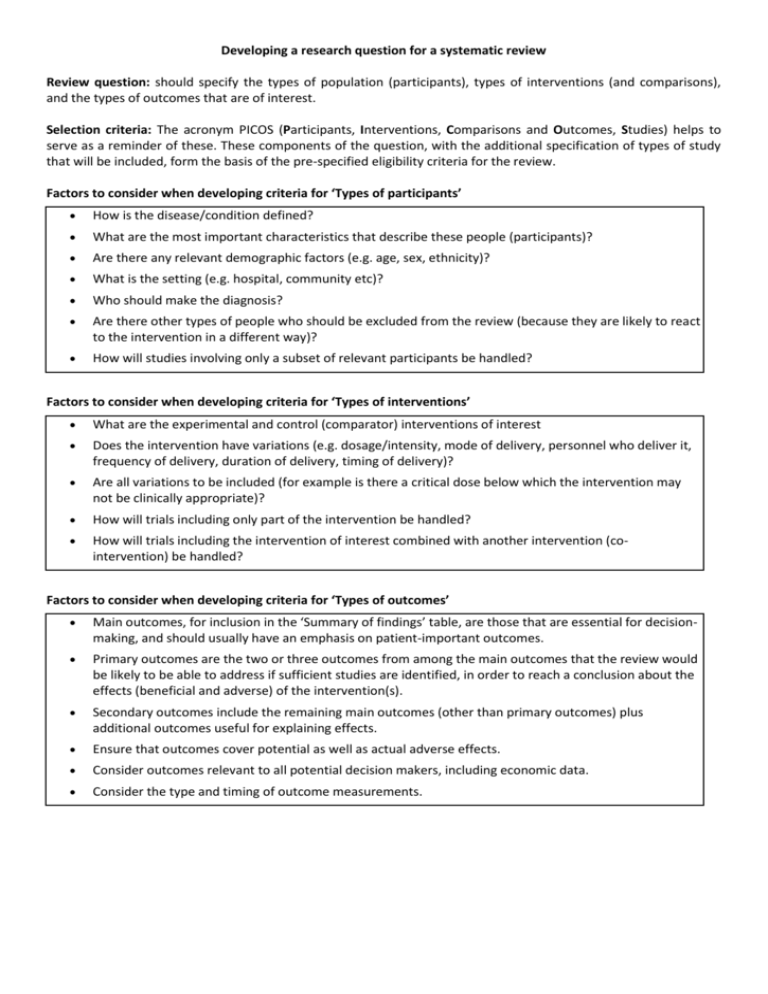PICOS-Exercise-Flying-Socks
advertisement

Developing a research question for a systematic review Review question: should specify the types of population (participants), types of interventions (and comparisons), and the types of outcomes that are of interest. Selection criteria: The acronym PICOS (Participants, Interventions, Comparisons and Outcomes, Studies) helps to serve as a reminder of these. These components of the question, with the additional specification of types of study that will be included, form the basis of the pre-specified eligibility criteria for the review. Factors to consider when developing criteria for ‘Types of participants’ How is the disease/condition defined? What are the most important characteristics that describe these people (participants)? Are there any relevant demographic factors (e.g. age, sex, ethnicity)? What is the setting (e.g. hospital, community etc)? Who should make the diagnosis? Are there other types of people who should be excluded from the review (because they are likely to react to the intervention in a different way)? How will studies involving only a subset of relevant participants be handled? Factors to consider when developing criteria for ‘Types of interventions’ What are the experimental and control (comparator) interventions of interest Does the intervention have variations (e.g. dosage/intensity, mode of delivery, personnel who deliver it, frequency of delivery, duration of delivery, timing of delivery)? Are all variations to be included (for example is there a critical dose below which the intervention may not be clinically appropriate)? How will trials including only part of the intervention be handled? How will trials including the intervention of interest combined with another intervention (cointervention) be handled? Factors to consider when developing criteria for ‘Types of outcomes’ Main outcomes, for inclusion in the ‘Summary of findings’ table, are those that are essential for decisionmaking, and should usually have an emphasis on patient-important outcomes. Primary outcomes are the two or three outcomes from among the main outcomes that the review would be likely to be able to address if sufficient studies are identified, in order to reach a conclusion about the effects (beneficial and adverse) of the intervention(s). Secondary outcomes include the remaining main outcomes (other than primary outcomes) plus additional outcomes useful for explaining effects. Ensure that outcomes cover potential as well as actual adverse effects. Consider outcomes relevant to all potential decision makers, including economic data. Consider the type and timing of outcome measurements. Title: Review question: Selection criteria: Participants Interventions Comparator Outcomes Studies











